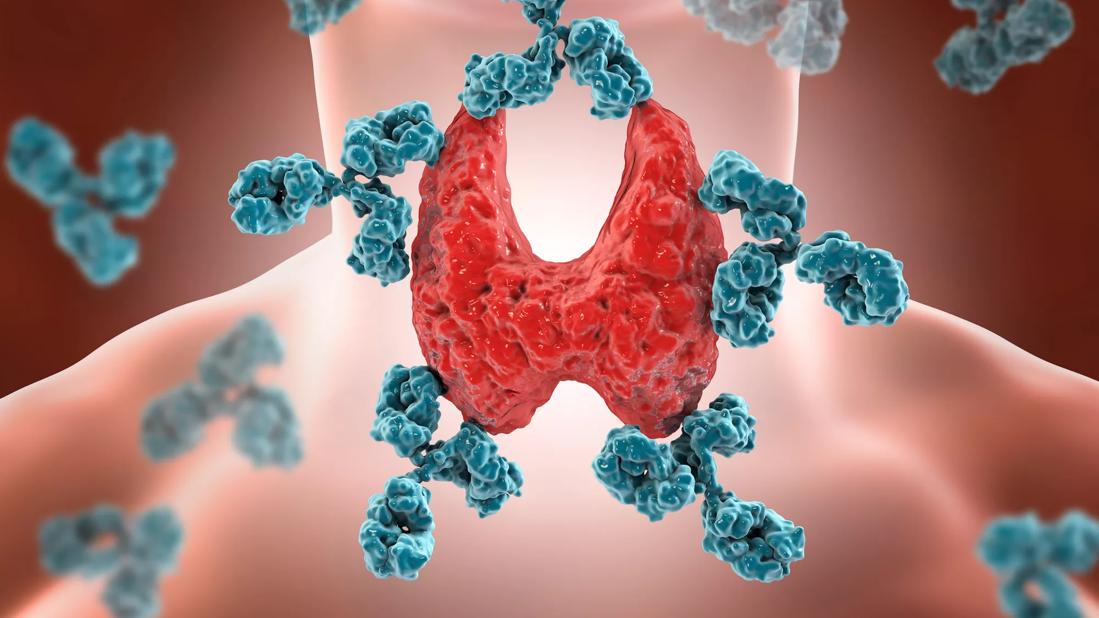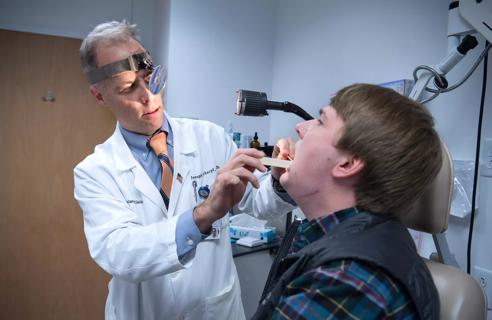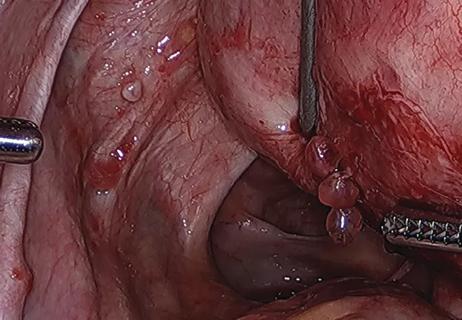New research provides clinical insight into prognostic factors

Anaplastic thyroid carcinomas (ATCs) remain among the most highly lethal of all cancers, but newly published data from Cleveland Clinic’s 21-year experience provide reasons for optimism in the current era of targeted and immune therapies.
Advertisement
Cleveland Clinic is a non-profit academic medical center. Advertising on our site helps support our mission. We do not endorse non-Cleveland Clinic products or services. Policy
The rare, aggressive, undifferentiated tumors have a median survival of 4-9 after diagnosis, and a one-year survival of just 20%. Response rates to standard multimodal surgery, radiation and systemic chemotherapy are less than 15%. But, the picture shifted since the 2017 publication of a phase 2, open-label trial of the targeted therapies dabrafenib and trametinib in 16 patients with BRAF V600E ATC, showing a 69% overall response rate.
This led to rapid approval by the US Food and Drug Administration, and in 2021 updated guidelines from the American Thyroid Association establishing use of dabrafenib and trametinib as standard of care for ATC treatment in patients with the targeted mutations.
The new retrospective case series of 97 patients with ATC treated at Cleveland Clinic between 2000 and 2021 showed that the ability to receive definitive or adjuvant radiation therapy, younger age, the presence of other tumor types and absence of distant metastases all predicted better overall survival. And, as anticipated, survival was also prolonged among eligible patients who received targeted and/or immunotherapy.
“It was an important study because we have one of the largest single institutional experiences with anaplastic cancer and there have been significant changes in treatment now with targeted therapies, particularly if people have BRAF mutations where the standard of care has changed,” says lead investigator Joseph Scharpf, MD, Professor of Otolaryngology-Head and Neck Surgery CCLCM and Director of Head and Neck Endocrine Surgery in the Cleveland Clinic Head and Neck Institute.
Advertisement
The goal of the review, Dr. Scharpf says, “was to give us a perspective of the results we’ve had for patients and to allow us to compare and see how we’re doing with the new targeted treatment going forward.”
The 97 patients with biopsy-proven ATC had a median age of 70 years at diagnosis. Two-thirds were female and the majority white. BRAF variation status was assessed in 38 of the patients using immunohistochemistry testing, next-generation sequencing of tissue and liquid specimens or a thyroid-specific variation panel. Of those, 18 had a BRAF-V600E variation, and 20 had a BRAF wild type variation.
Treatments included surgery in 44 patients, chemotherapy in 41, definitive or adjuvant radiation therapy in 34 and targeted therapy in 28.
Overall survival for the entire group was 6.5 months. In multivariate analysis, factors significantly associated with longer survival were surgery versus no surgery (hazard ratio 2.12), receipt of chemotherapy (3.28), and receipt of definitive or adjuvant radiation (2.47). Moreover, survival also lengthened beginning in the year 2014, when broad use of BRAF variation testing and administration of targeted therapies began (3.28 versus prior to 2014).
Among four patients who received immunotherapy as part of their treatment in combination with other targeted therapies, overall survival ranged from 7.4 to 42.0 months.
Of the total 28 who received targeted therapies, five had to discontinue them due to toxic effects.
“The level of detail in the current report is a first for ATC treatment,” Dr. Scharpf says. “No other institution has looked at this with the granularity that we have. Some will examine national cancer databases to draw conclusions. But you can’t get the degree of detail you can get from a single institution’s data about individual patients. This is unique.”
Advertisement
When a patient is diagnosed with ATC at Cleveland Clinic, a multidisciplinary team is immediately assembled for their care, including surgical oncology, radiation oncology, and medical oncology.
The patient is evaluated for airway patency and physical findings, and undergoes imaging and also molecular testing for BRAF. This is done in-house due to the need for rapid assessment as to whether they’re eligible for targeted treatment. Those results usually are available within 24 hours. Tissue samples are also sent out for next-generation sequencing, which typically takes longer.
Clinical coordinating nurses assess patient eligibility for ongoing clinical trials. For patients who aren’t BRAF positive, the team will investigate other best treatment options and any targets that can be used.
“There are some other rare mutations. That’s why we send out the tissue for molecular testing, to see if there’s something we can focus on. If we find a different or unique mutation, that could be a game-changer for an individual patient if that mutation can be targeted with some kind of medicine,” Dr. Scharpf explains.
Now, Cleveland Clinic is one of the study sites for a new phase II clinical trial investigating whether the addition of the immunotherapy pembrolizumab to dabrafenib and trametinib before surgery further improves survival for patients with BRAF V600E-mutated ATC. “These are highly immunogenic tumors so we hope the new drug will improve outcomes,” he says.
Advertisement
Advertisement

Studies find mTOR inhibitor may play key role in treating Hurthle cell carcinoma

OMT may be right for some with Graves’ eye disease

Dynamic risk assessment may aid clinicians in helping support informed treatment decisions

A new study indicates that the combined approaches can be performed without mortality and with acceptable morbidity

Struma ovarii can give rise to uncommon malignancy

Prompt, multidisciplinary care helps navigate the complexities of a rare condition

How innovations and advancements in skull base surgery are improving outcomes

A commitment to sharing expertise has fostered a global exchange of ideas